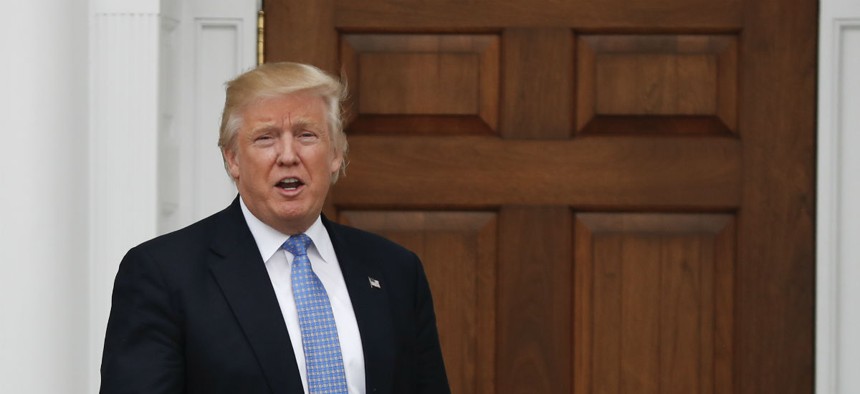Trump Pledges DOD-Led Plan to Protect Vital Infrastructure from Cyberattack

President-elect Donald Trump at the Trump National Golf Club Bedminster clubhouse Nov. 20. Carolyn Kaster/AP
It’s not clear how far the plan will depart from current practice.
President-elect Donald Trump will ask the Defense Department and the chairman of the Joint Chiefs of Staff “to develop a comprehensive plan to protect America’s vital infrastructure from cyberattacks and all other form of attacks,” according to a video posted Monday.
Trump included the plan in a list of “executive actions we can take on day one to restore our laws and bring back our jobs.” Other items on the list included withdrawing from the Trans-Pacific Partnership trade deal, removing rules that limit energy exploration and ramping up visa fraud investigations.
The cyber protection pledge may be a slight modification of a plan the incoming president posted to his campaign site in October. That plan called for an investigation of cyber vulnerabilities in critical infrastructure conducted by a “cyber review team” that would include members from the military, law enforcement and the private sector.
Unlike “vital infrastructure,” which has no fixed definition, the term “critical infrastructure” is typically used within government, to refer to 16 sectors defined by presidential directive, including financial services, transportations, chemical facilities and dams.
The Trump transition team did not immediately return an email seeking clarification.
The Homeland Security Department is currently tasked with ensuring the cyber protection of U.S. critical infrastructure with protection measures supplied by the companies themselves. U.S. Cyber Command has responsibility for protecting DOD networks and supporting DHS in protecting critical infrastructure upon request.
Officials and lawmakers have historically been wary of tasking the military directly with defending civilian and private sector systems.
NEXT STORY: What CIOs should do next



